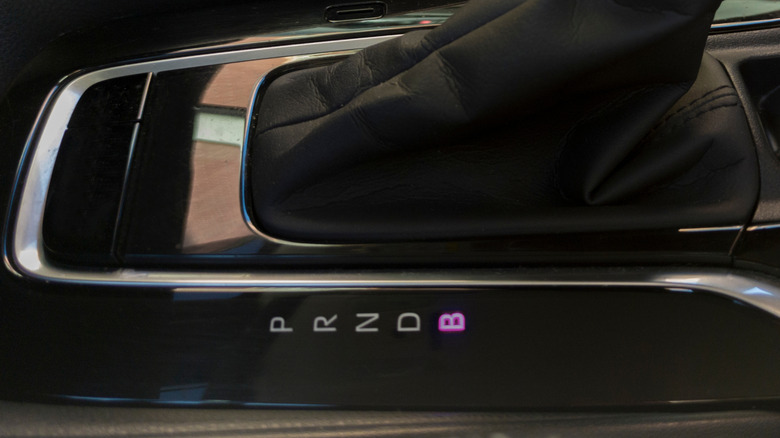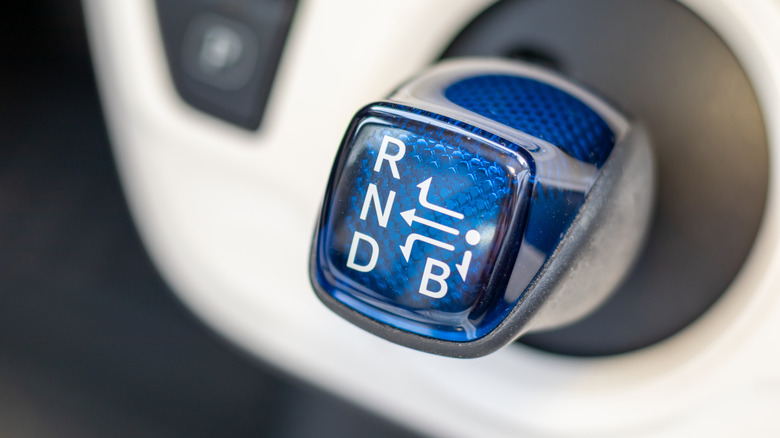What Is The 'B' Gear Shift Position (& What Happens When You Drive In That Gear)?
Owners of newer hybrid or electric vehicles may be familiar with that unassuming but mysterious letter on the gear selector: "B." Unfortunately, it's not for Boost mode. Instead, the "B" stands for "Braking." That name is a bit misleading, though, because selecting this mode doesn't actually apply the car's traditional friction brakes. The main purpose is to maximize the efficiency of the vehicle's regenerative braking system.
When you lift your foot off the accelerator in "B" mode, it causes the electric motor to switch into a generator mode. This essentially works by converting the car's forward momentum — its kinetic energy — into electrical energy, which gets fed directly back into the battery. For the driver, this creates a sensation of increased drag that effectively slows the car down in a manner that's very similar to shifting to a lower gear in a manual car.
It's worth mentioning that this "B" position serves the same purpose as the "L" (Low) gear, which exists in some gasoline models to increase engine drag and help slow the vehicle on a steep downhill grade. The key difference, and the reason for the name change, is the technology behind it. Brands like Toyota use "B" because their advanced hybrid systems don't actually have a conventional, physical Low gear to shift into. Instead, the braking effect is created electronically, not mechanically.
What happens when you drive in that gear?
Engaging "B" mode creates a noticeably different driving feel, as the car begins to slow down more aggressively the moment you lift off the accelerator. You can switch seamlessly to it from the standard "D" (Drive) position at any time, even while the car is in motion. Of course, its most celebrated use is for controlling speed while going down a long, steep hill.
Here, the engine braking effect allows for a safe descent without you having to ride the brake pedal. This, in turn, reduces wear and tear on brake pads and discs, potentially saving you money on maintenance down the line. The "B" mode is also a champ in congested stop-and-go traffic and can squeeze out energy from those frequent decelerations. Some drivers also find it useful for smoother slowing in slippery conditions like snow. That said, using it on flat, open highways is not recommended. Coasting in "D" is more energy efficient as it allows the car to roll forward using its own momentum with minimal resistance.
But it's still clear that this can be an extremely useful feature for certain cases, so why don't gasoline-powered cars have it? The answer is simple: They are not equipped with a regenerative braking system. A gas engine and transmission have no way to capture and store kinetic energy. Instead, as stated above, that purpose is fulfilled by the "L" gear in some cars, though even that's getting increasingly rare as modern transmissions offer a wide range of gear ratios within the "D" (Drive) mode itself. Now, with the "B" mode out of the way, maybe you'd also want to know what the "S" gear mode stands for.

